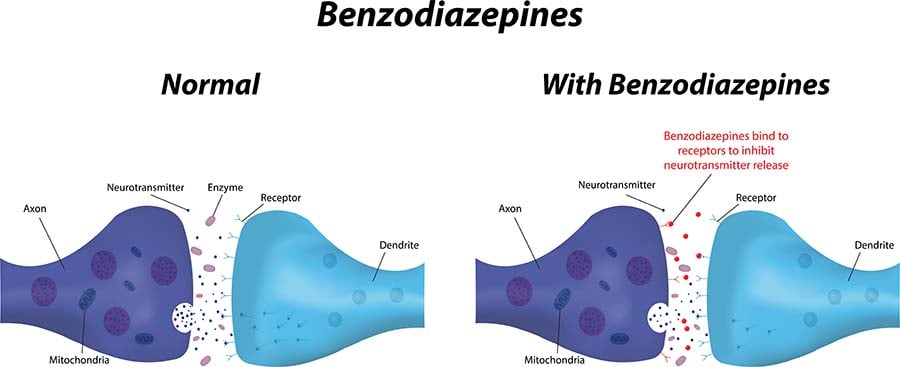
Table of Contents
Just like us, dogs sometimes have to deal with pain, and anything that can subside it helps.
Most commonly, your dog will suffer from pain caused by arthritis, inflammation, injury, or postoperative pain.
While they do not show their pain as obviously as we do, they still require treatment to relax, heal, and feel more comfortable during that time.
With the current developments in veterinary medicine and medicine in general, there has been an increase in options for pain relief in dogs.
They can be treated with daily supplements that rejuvenate their system, light painkillers, or heavy-duty pain medications and plenty of other scientifically proven methods.
While what your dog will be put on will be determined by the vet, some dogs will be placed on muscle relaxers.
And as with all types of supplements and medications that may affect your pooch, you should be familiar with when, why, how, and what muscle relaxers for dogs are.
You'll also learn the different types of muscle relaxers out there.
What are Muscle Relaxers for Dogs?
Muscle relaxants are medications prescribed by a vet that relax the muscles within your pet.
They can reduce muscle spasms, inflammation, and relieve spinal cord conditions.
It has not been officially determined for which conditions muscle relaxants should be prescribed except for spinal conditions; therefore, it is mainly up to the veterinarian to determine which option and when to use.
Muscle relaxers work by reducing the stiffness or how tense the muscles are, which then reduces the amount of pain or discomfort being experienced by the dog.
Some muscle relaxers work by directly affecting the muscles of the canine's body while other types act on the animal's nervous system, or the brain and spinal cord.
Relaxers block the inter-neuronal pathways in the spinal cord and the mid-brain activating system, and are very beneficial to make dogs experiencing intense pain feel more comfortable.
But even though they are beneficial, they do not actually heal the injuries or the disorders, and they only relieve the sensation of pain associated with them.
Common Types of Dog Muscle Relaxers
There are multiple different types of muscle relaxers for dogs commonly prescribed to treat varying levels of pain symptoms.
Not all have the same results, so it is crucial to understand which one is best for your dog or why the vet may have prescribed on over another.
Guaifenesin
What is also considered glyceryl guaiacolate, guaifenesin is a muscle relaxant that blocks nerve impulse transmissions in parts of the brain, brain stem, and spinal cord.
It is most often used as a support for when a dog is put on anesthesia for minor surgeries or the treatment of strychnine intoxication in dogs.
It can relax both laryngeal and pharyngeal muscles without affecting the diaphragm and respiratory functions.
Rimadyl
A non-steroidal anti-inflammatory drug that alleviates pain and inflammation in dogs. It is used to treat the pain associated with osteoarthritis in dogs.
Rimadyl can be used for both short-term treatment and day-to-day treatment of joint pain and inflammation that accompanies hip dysplasia and other forms of joint deterioration.
Methocarbamol
This is one of the most common types of muscle relaxers and is used as a relief for acute inflammatory and traumatic conditions of muscles and reduces muscle spasms.
It is a centrally acting muscle relaxant which means that it promotes cns depression.
Just like most others, it will block and prevent nerve impulses in the dog's body responsible for the “pain signal” from being sent to the animal's brain.
This drug is FDA approved to be used for intervertebral disc disease, as well as severe muscular injuries.
Veterinary medicine also uses it when a dog is suffering from muscle spasms, and certain dangerous compound toxicity levels.
Your vet will prescribe oral methocarbamol tablets when treating a condition.
In a surgery setting, injectable methocarbamol is used.
Dantrolene
Contrary to the other muscle relaxants, Dantrolene has a direct effect on the muscle rather than on the nervous system. It's typically used in dogs and cats to improve urinary function.
It's also used when your dog is suffering from “malignant hyperthermia” (acute increase in body temperature).
When this happens your dog will have involuntary muscle spasms that can lead to muscle damage.
Malignant hyperthermia happens from, over-exercise, being overly excited or stimulated, ingesting too much beer, or they have been bitten by a black widow to name a few.
This muscle relaxant works by interfering with a structure found within muscles called the sarcoplasmic reticulum. The sarcoplasmic reticulum produces calcium ions which help muscles relax and contract.
Blocking this structure prevents muscle spasms from happening over and over.
It is also used to treat canine stress syndrome as well.
Dantrolene works well for all of these because while it does its job, it does not have any effects on respiratory or cardiac function.
Benzodiazepine
This is a type of psychoactive drug, often referred to as “benzos”, with the structure of benzene ring and a diazepine ring.
It is a spinal cord depressant that affects reflexes at the dog's spinal level and inhibits synaptic releases.
It is used to treat dogs that suffer from seizures, anxiety.
Both of which cause mild to severe muscle spasms.
Some types are used in addition to anesthesia for short procedures.
When to Use Muscle Relaxers on Your Dog
When to Use Muscle Relaxers on Your Dog
Muscle relaxers for dogs are used to reduce muscle pain, inflammation, and general stiffness that cannot be treated with natural at-home remedies.
You can use over the counter muscle relaxants, but it is always a good idea to consult a vet to make sure the condition can and should be helped using them.
Dogs can experience muscle pain because of a multitude of different reasons.
It can be caused by over-extension or overexertion of the muscles while playing, immobility over the course of a long period of time, or even misalignment of muscle joints due to the wrong posture.
Misalignment can cause dog's muscles in a relaxed posture to depend on other muscles to compensate for it's out of wack positioning and weight.
The pain may not always be noticeable, as it is a dog's instinct to hide their pain to avoid showing signs of weakness or vulnerability.
There are still a few easily noticeable signs that they are suffering from pain, like:
- A hunched posture
- Limping
- Panting excessively when resting
- Staring
- Restlessness or impatience
- Whimpering, crying, or howling
When you notice your dog experiencing any of these symptoms or multiple symptoms, try some at home remedies to see if they relieve your dog's pain.
If the pain is not relieved, take the dog to the vet and ask about having muscle relaxers prescribed or if they would be a solution to the pain.
Potential Side Effects
As with all kinds of medication, there are possible side effects associated with the use of dog muscle relaxers.
The effects can range from small to potentially deadly depending on the type and dosage of the muscle relaxer prescribed or used.
It may also depend upon whether the muscle relaxer affects the muscles directly or the nervous system.
Side effects of muscle relaxers that affect the nervous system are slightly more potent than those that affect the muscle directly.
It can cause the spinal cord, brain, and brain stem to malfunction and become damaged as well as negatively affect the lungs and heart of your dog.
Other side effects of muscle relaxers include drowsiness, darkening of urine, swelling, and other signs of allergic reactions.
It can also include weakness, stumbling, incoordination, drooling, and possibly vomiting.
Overdosing can occur, and the dog should be taken to an emergency center immediately to counteract the effects.
Signs that your dog may be overdosing are extreme sedation, loss of reflexes, incoordination, drooling and vomiting.
Most side effects can be prevented by consulting with a veterinarian before using any type of muscle relaxant, choosing specifically the ones that the vet prescribes and following the exact dosage.
READ NEXT: The Ultimate Guide on Pain Management for Dogs
Pin and share with other dog owners:















